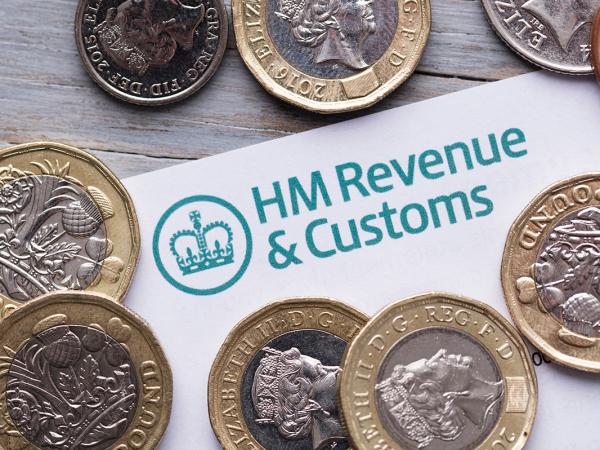HICBC: issues on separation
This page looks at some complications which arise with the high income child benefit charge (HICBC) when a relationship ends. This is a complex area. You should seek specific advice on HICBC issues which may arise on separation.
Please note: References on this page to being married include being in a civil partnership and references to a spouse include a civil partner.

Content on this page:
Definition of ‘partner’
Two people who are married to each other are treated as ‘partners’ for the HICBC if they are not separated under a court order or separated in circumstances likely to be permanent.
However, you can also be treated as a ‘partner’ of someone else for the purposes of the charge if you are ‘living together as if you are married.’
In most cases, it is usually clear whether or not someone is treated as your partner under either of these tests. But determining when someone becomes your ‘partner’ – and when that person may stop being your ‘partner’ – can be tricky.
If you are not married
Relationships are infinitely variable. If you are living together with your partner and you are not married, or not yet married, how can you tell whether you are living together as if you were?
There is no legal definition. This means you have to look at lots of factors, including:
- financial interdependence
- stability of your relationship
- whether or not you have children together
- public acknowledgement of your relationship (for example, whether friends and family see you as a couple)
- your future plans together
If you are not married but you are living together with your partner, then you need to determine precisely when your relationship changes to be of a more permanent nature. In other words, you must work out when it would start to be described in terms consistent with that of a married couple.
This can be very problematic, not least because each partner may have different views on the point (and so may HMRC or the courts), but also because it must be assessed on a weekly basis to determine your liability to the HICBC.
If you never marry, then you may need to make the reverse assessment if you later separate: when do you go from ‘living together as a married couple’ to ‘not living together as a married couple’?
On a practical level, if you are living together with someone you would describe as your partner, you might consider your ‘partnership’ for HICBC purposes to commence from the point you move in together and end if and when you then later move out and no longer live in the same household. However, the period may be shorter than that – for example, if you separate but you continue to live under the same roof for financial or practical reasons.
Remember that the test is whether or not you are living together as a married couple. This means that if you are not married and you are not living together, then another person cannot be treated as your partner for HICBC purposes – whatever the nature of your relationship.
If you are (or were) married
If you are married, you will automatically be treated as partners for HICBC purposes unless you are separated. That separation must be either under a court order or in circumstances likely to be permanent. A court order will be clear enough. But how can you tell whether you have separated in circumstances ‘likely to be permanent’?
Again, this is depends on the facts and circumstances of the case. There is no legal test and the two parties to the relationship, HMRC and the courts may all have a different view.
Practically, you would usually be separated in such circumstances if, as a couple, you both agreed that you were not going to get back together. Where you are not in agreement, HMRC or the courts will need to resort to looking at the available evidence such as whether (or when) one party moved out of the marital home and whether that was a permanent or temporary move.
Liability to HICBC
It can be confusing to understand when the liability to HICBC ends in case of separation, because the HICBC is always assessed based on your annual income – even though you may have only had a partner who claimed child benefit for part of the year.
Note that liability to the charge will generally fall on the individual who claims the child benefit (or their partner at the time of entitlement), even if the child benefit is paid to someone else (such as an ex-partner). The only exception is where contributions are made by the claimant towards the upkeep of a child who lives with someone else and the liability to the charge transfers to that person (or their new partner) – see more information under the relevant heading below. For this reason, it is important to review who is making the claim to child benefit when a couple separates – otherwise the HICBC may arise when it could have been avoided.
Calculating the HICBC in the year of separation
First, you need to work out the date of separation for HICBC purposes (see information above, depending on whether you are – or were – married or not).
Then, in calculating the charge, you need to add up all of the child benefit received by your former partner (assuming they were the one who claimed it) in respect of the weeks in the tax year you were together – up to and including the week of separation. Note that child benefit is normally paid four-weekly, so you would likely need to include part of a 4-weekly payment. A four-weekly payment is paid in respect of the week of payment and the previous three weeks.
Income changes
As highlighted above, your income level for HICBC is always assessed based on the entire tax year – not simply your income for the period during which child benefit is taken in account when calculating the charge, if that is different.
The below example shows how this can lead to counter-intuitive results.
Backdating child benefit payments
If, as a couple, you are affected by the HICBC then you may choose to opt out of receiving child benefit payments by completing an online form. You may do this for a number of reasons – for example, in order to avoid the partner with the higher adjusted income having to file a self assessment tax return (though they may have to file one in any case), or to avoid the hassle of claiming child benefit only to pay back most or all of it through the HICBC.
Opting out of payments, as opposed to ending the claim altogether, is an important difference as the child benefit claimant would then continue to be entitled to National Insurance credits. This may help them build up entitlement to a UK state pension if they were not entitled to a qualifying year towards their state pension for any other reason.
Once you have opted out, you can restart your child benefit payments – for example, after separating from a higher-income partner who would have been liable to the HICBC.
In certain circumstances, it is possible to backdate the payments for up two tax years. Strictly speaking, the law allows you to do this in the case only where no HICBC would have been payable. However, HMRC also allows backdated payments in cases where the HICBC would be less than the child benefit payable.
You cannot, therefore, backdate payments after separation if in so doing you would trigger the HICBC on your former partner.
If you receive contributions towards your child’s upkeep
The HICBC applies to you (or your partner) in this situation if all of the following apply:
- You (or your partner) has an adjusted net income of more than the relevant threshold for a tax year (£50,000 up to and including 2023/24, £60,000 from 2024/25).
- Someone else (such as your ex-partner) claims child benefit for a given week in that year in respect of a child who lives with you, on the basis that they are contributing towards the cost of providing for that child.
- Neither that person who claims child benefit (nor any partner they may have) is liable to the HICBC for the tax year in which that week falls.
It is therefore not possible to avoid the charge by having your ex-partner claim child benefit and pay you the money.
However, if the child is only living with you for a temporary period (no more than 52 weeks) and they live with the person who claimed child benefit immediately before and after that period, then the child benefit claimed in that period is ignored for this purpose.
This means, for example, that in shared custody arrangements where your ex-partner claims child benefit and your child lives with you for only part of the year, liability for the HICBC in respect of that claim would not normally transfer to you.
If you get back together
First, if you get back together with your partner, you should ask whether or not you ever separated for the purposes of the HICBC. If you were married (and perhaps remained so), then it would be necessary for you to have been separated in circumstances likely to be permanent. Therefore, to get back together after this would, by definition, be unlikely. Nevertheless, it is possible, depending on the facts of the case.
If you are the higher earner and your (ex-)partner continued to claim child benefit while you were separated, you would again need to determine the precise point (or at least, the precise week) in which they became your partner again so that you can calculate how much child benefit will need to be brought into the HICBC calculation. The amount of child benefit paid for weeks during which you were separated would be ignored.
If you were never married, remember that living together is a requirement for being treated as partners for HICBC purposes. So, if you moved out, you would need to move back in together and then ask yourselves at what point did you recommence living together as a married couple. This is the point from which the child benefit payments would be clawed back via the HICBC.
Completing your tax return
First, you need to work out the total amount of child benefit (or period of entitlement) which needs to be brought into account when calculating the charge on your tax return. This may not be the same as the total child benefit received in the tax year by the claimant.
If your adjusted net income is higher than your ex-partner’s adjusted net income for the year, and you did not claim child benefit yourself in the year, then the amount of child benefit for the calculation of your charge will be your ex-partner’s entitlement for the part of the year prior to separation. You can either ask your ex-partner to confirm the amount of entitlement for the year or you can use the calculator on GOV.UK to work this out. You will need to enter the date of separation as the ‘end date’ when using the calculator. The calculator will produce two figures, it will tell you firstly how much child benefit would have been received during the period that you were living with the claimant (provided you correctly enter the number of children and the correct end date). The calculator will also provide a second figure which is an estimate of your HICBC charge for the year, based on the income information entered into the calculator.
We provide more information on completing your tax return where child benefit for a part year is used to calculate the correct charge in our guidance page HICBC: moving in with your partner. Though the guidance is written from the viewpoint of becoming liable to the charge rather than ceasing to be chargeable, the concepts are broadly similar when it comes to completing your tax return.
More information
If you have a change of circumstances relating to your child benefit claim, you should contact the Child Benefit office.



